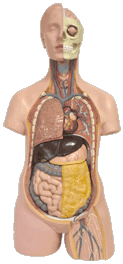At WiseGEEK, we're committed to delivering accurate, trustworthy information. Our expert-authored content is rigorously fact-checked and sourced from credible authorities. Discover how we uphold the highest standards in providing you with reliable knowledge.
What Is Polyradiculoneuropathy?
Polyradiculoneuropathy, also known as Guillain-Barré syndrome, is a medical condition where the peripheral nerves and the spinal nerve roots become irritated. This occurs because the body’s immune system malfunctions, commonly thought to be the result of an infection inside the body in the digestive tract or respiratory system that begins to attack the nerves and nerve roots. The assault damages the protective covering of the nerves and interferes with the communication process between the brain and the body. Symptoms typically start in the arms and legs, but can spread throughout the body and cause widespread problems.
The first signs of polyradiculoneuropathy can include an abnormal sensation in the feet and legs which spreads to the hands and arms or into the face. These atypical feelings can range from a loss of sensation, otherwise known as numbness, to a stinging or “pins-and-needles” sensation. Unyielding pain may develop in the low back area. A general lack of strength or weakness of the muscles may also be present.

The muscle weakness associated with polyradiculoneuropathy can make daily or routine movements, such as walking, swallowing, speaking and facial expressions difficult or even impossible to perform. As this condition progresses, it can affect the control of the bowel and bladder, balance and breathing. Heart rate and blood pressure may also become affected resulting in a significant drop in both. In severe cases paralysis of the body could occur.
Most often the symptoms of Guillain-Barré, or polyradiculoneuropathy progress quickly and peak within three weeks. However, due to its rapid progression, close monitoring of general health, sometimes resulting in a hospital stay, is required to maintain overall wellbeing. Side effects of this condition may include a temporary loss of the ability to breathe requiring the need for a breathing machine to decreases the chances of respiratory distress or heart attack.
The problems associated with polyradiculoneuropathy may take up to a full year to clear. Long term side effects are dependent on the severity and swiftness of the nerve damage. People undergoing serious or severe symptoms early on in the condition’s progression may experience permanent problems including changes in sensations or difficulties with normal movements such as walking, balance and coordination. A rare side effect includes the chance of a full-blown relapse of polyradiculoneuropathy.
Though there is no cure for polyradiculoneuropathy, treatment can include cleansing of the blood by a process called plasmaphoresis, or a procedure where healthy antibodies, also known as immunoglobulins, are feed into the bloodstream to help fight off the antibodies causing the damage to the nerves. Range of motion activities, either independently or with the help of a caregiver maintains the body’s flexibility and strength. Often physical therapy is necessary to regain normal movement and function.
AS FEATURED ON:
AS FEATURED ON:










Discuss this Article
Post your comments